Child psychologists often talk about the importance of having a pet in the family where the child grows. And if the family cannot “pull” the dog or cat (for various reasons), fish become the best option. Quiet, beautiful, obedient fish really like children. They will not run around the house, bite and scratch furniture, they do not need to be walked and vaccinated. Therefore, an aquarium for children can be a compromise in the establishment of a pet.
What is a baby aquarium for?
The small underwater kingdom in the house is, of course, interesting. All households will be enthusiastically watching what is happening under water, how the fish behave, how beautifully the light flows in the aquarium and the underwater gardens sway. It is aesthetically pleasing, very decorative, and at the same time a living corner appears in the house. So, it requires care, care and attention.
If a child just watches how mother feeds the fish, how she changes water, how she turns on filters, this is already a kind of teaching the rules of caring and caring for living things. But if the child is accustomed to help, if they delegate some powers to him, instill responsibilities - this is already a practical skill, which is really worth building from childhood.
Baby Aquarium Care Process disciplines, raises interest in studying the living world and nature, develops responsibility and distracts from gadgets. Already these reasons are enough to reflect on the acquisition of a “sea house”.
Many guys began to show interest in natural science just by studying the life of underwater inhabitants.
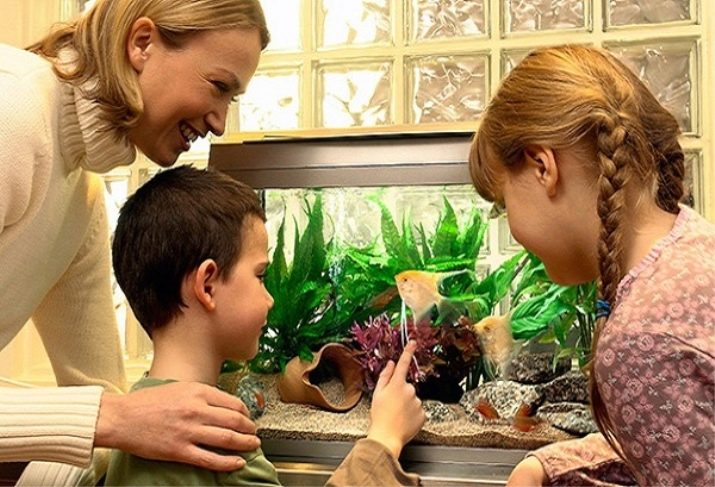
Teachers give interesting examples. When an aquarium appeared in the family, the child began to spend almost all his free time with him.He came up with names for all the pets, he began to compose fairy tales about them, study their habits and even keep a diary of observations. At some point, the child wants to know more about his charges, and he begins to read. First, encyclopedias about marine inhabitants, then books on natural sciences for children and so on. So, with the help of one acquisition, the “unreadable” child was able to become addicted to books.
And if in preschool age the aquarium is perceived as an observation game, then schoolchildren can take it more seriously. They already understand that fish will remain alive and healthy only if people feed them, change their water, and clean their aquarium. Then the guys begin to dive deeper into the topic: they learn what a biocenosis, photosynthesis, and so on are.
Aquarium for a child is not so much a game as a useful, cognitive tool for distraction, hyperactivity, inability to manage one’s time and be responsible for one’s actions. And the famous doctor Komarovsky reminds parents that the fish tank is also a natural humidifier in the room.
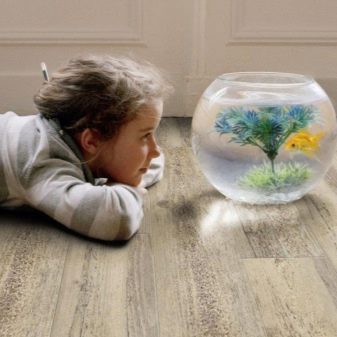
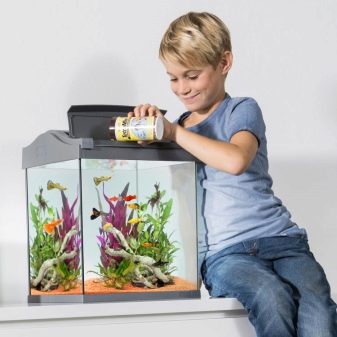
Security questions
All the arguments in favor of the aquarium for the child have been said, and now it is worth saying about safety measures. Aquarium enthusiasm should be, above all, safe. First, the principle must act: "You can watch, you can not touch!" For preschool children, this is the main rule, since they will certainly want to touch the fish, send their favorite car into the water, feed the cookies to the underwater inhabitants. And only a strict rule will protect the fish and the aquarium from the child's mischievous pranks.
Important! Parents should consider how to properly connect the aquarium to the power supply, taking into account the fact that access to an electrician should be impossible for the baby. If organizing inaccessibility is unrealistic, the child should clearly explain why under no circumstances should he touch the wires.
You should think about where to place the aquarium itself. Its place should be where parents can freely control the interaction of the aquarium and the child. The cabinet on which the tank stands must be solid: all dangerous situations must be stopped. A child cannot knock over an aquarium, sit on a pedestal and so on. The rules of conduct for the aquarium are negotiated with the child even before his little sea kingdom appears in the house.
You can even give your child a small exam, whether he has learned the rules well, whether he is ready to be the owner of the aquarium.

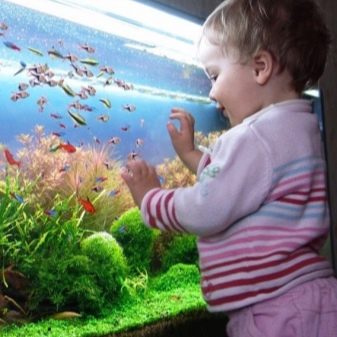
How to choose fish?
Aquarium fish is the best first study for young naturalists. Not all underwater inhabitants are suitable for this role. Fish should not only be beautiful, but also, preferably, tenacious. It’s great if for the first such experience you buy fish that are unpretentious in terms of living and eating. If this is your first aquarium, choose freshwater fish, they are easier to maintain than marine inhabitants.
And you also need to learn how to combine fish correctly: you cannot settle giants and babies together. Even non-aggressive large fish can accidentally swallow a baby, confusing it with food. It is better to start fish in schools, as fish can die due to certain circumstances. In the flock, losses will not be so noticeable: any loss of a pet is very frustrating for the baby.
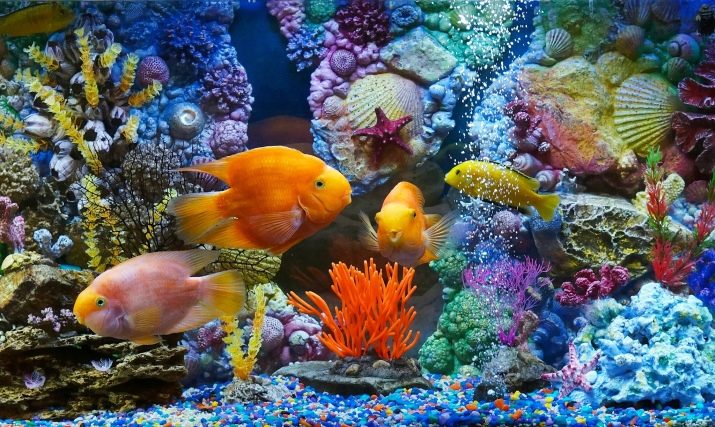
It is worth noting suitable fish for the first aquarium.
- Pecilia - a cute fish 4-5 cm long, active, agile, peaceful and unpretentious. There should be a lot of plants in the aquarium with pecilia, but there should be enough space for swimming.
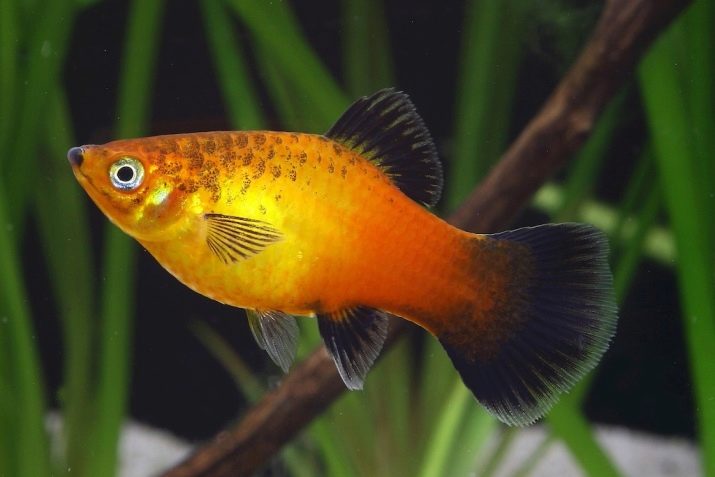
- Swordsman - bright and very beautiful fish with a chic tail. By the end, the tail is sharpened, and this feature is noted in the name of the fish. Unpretentious and, one might say, modest inhabitants of the aquarium are very popular with children.
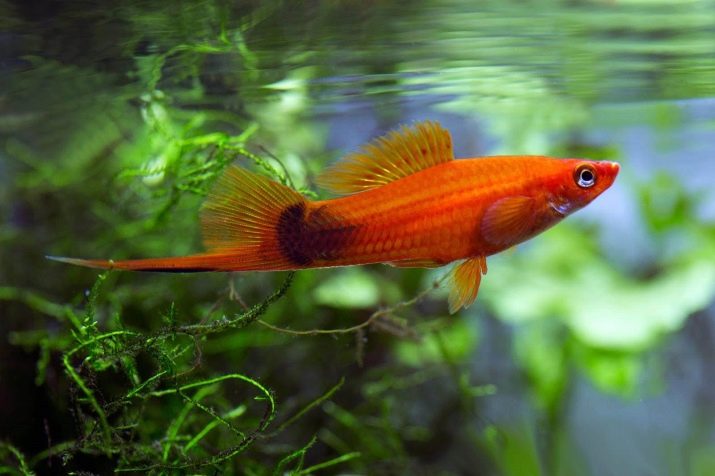
- Guppy - This is the most popular home diving resident. They easily adapt to different conditions, are unpretentious to food.Guppy males have magnificent tails, they are very mischievous and drive around the aquarium like racers.
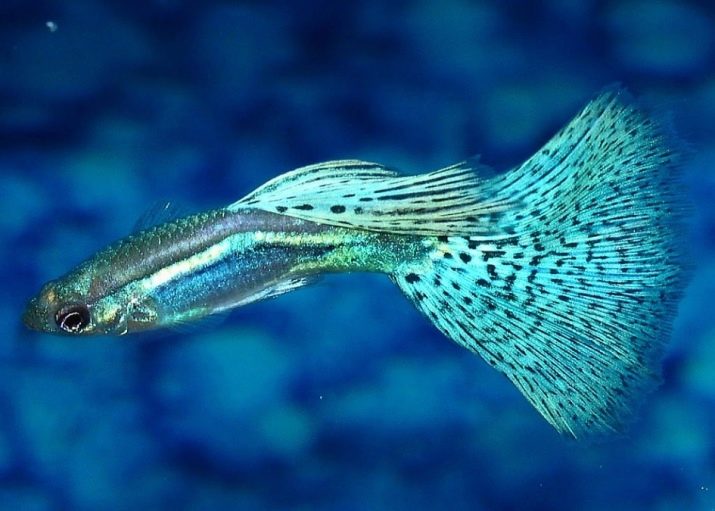
- Neon - This is a beautiful fish with a silver abdomen and a wide greenish strip. The peaceful disposition and modest demands of this fish make it a favorite for purchase in a children's aquarium.
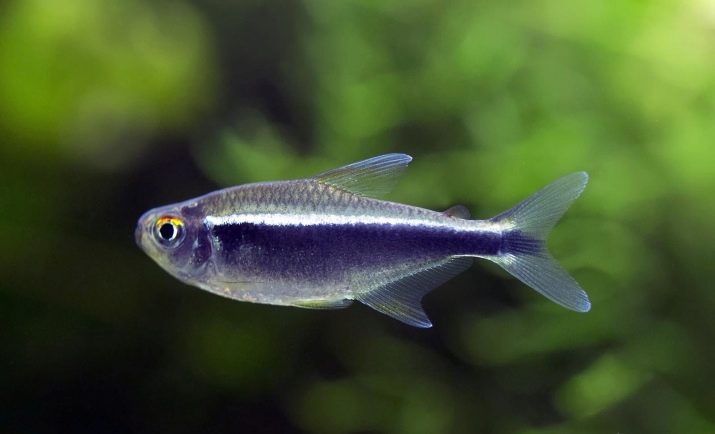
- Catfish - Another unpretentious underwater resident. He gets along in any company, makes friends with everyone. But he prefers gloomy lighting. If there is none in the aquarium, it will “sit out” in the shelter.
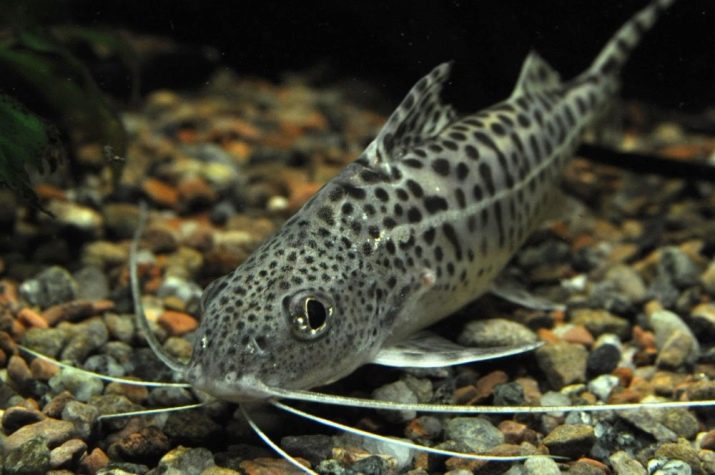
No need to try to buy many fish at once, different, exotic. Start with a flock of pets of the same species. Should be considered compatibility of the inhabitants of the aquarium. Many conflict over the conditions of food and feed; some species simply cannot divide the territory.
It also makes sense to rely on the choice of fish and on the nature of the child: it will be interesting for fidgets to watch the same energetic and mobile inhabitants of the aquarium (zebrafish, neon, barbus). And if the child is calm, he will be more interested in goldfish, diamond and black-striped cichlazomas.
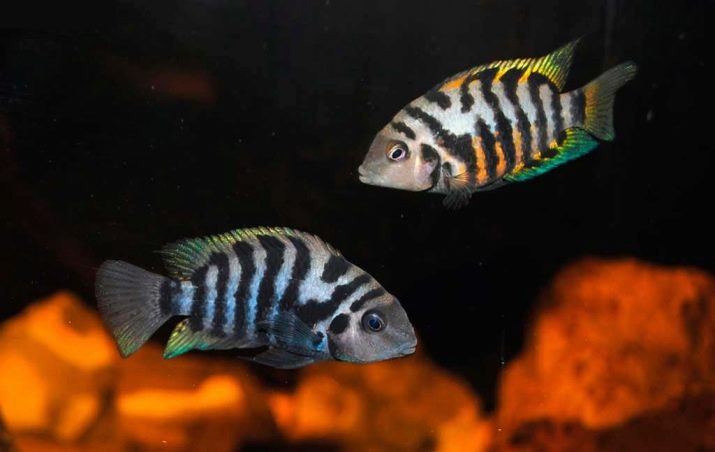
Choose an aquarium
No less interesting for the baby is the house for fish itself. Aquariums for children come in different sizes - from 5 to 60 liters. For starters, a tank that is modest in size and design is enough. For example, calm males can settle in a small round cozy aquarium.
Interestingly, it’s easier to take care of a large aquarium than a small one. The tank itself is a mini-model of an existing reservoir. And when you populate it with animals and plants, a certain biological balance is established in the aquarium. The larger the aquarium, the more stable this balance. Therefore, it is believed that the standard of living of fish in an aquarium of 80 liters will be higher than those of inhabitants who are forced to live in a "flat" modestly, 20 liters.
But for young aquarists, small models with a small number of pets are also suitable. For each fish should be approximately 1 liter, from this count and repel when buying an aquarium and its inhabitants. A round aquarium looks beautiful, but it cannot be said that it is especially suitable for fish. It is not as comfortable for them to live in it as in a rectangular one. Yes, and equip it, look after a round aquarium is not very convenient.
By the way, many fish do not want to breed in a round tank.
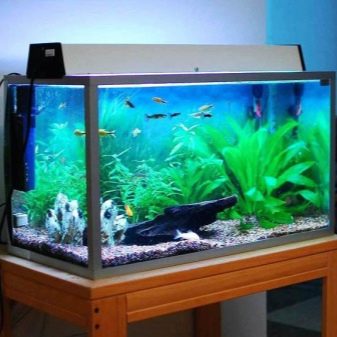
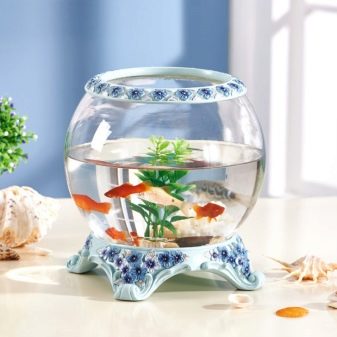
It is worth paying attention to some important information about the aquarium.
- You should not place an aquarium near a window or next to a battery. Direct sunlight should not fall on the container. Because of this, the algae begins to grow, the water "blooms", a biological imbalance occurs.
- Installing an aquarium cannot be a matter of five minutes. First, the glass tank must be thoroughly washed, put the washed soil in it, then fill with settled tap water, plant the plants. Then the filter, lighting and heating are connected. Then the aquarium is covered with a special cover, only then can fish be populated into it.
- If the aquarium has a good filter, you can do without an aerator. But in principle, such a compressor is needed - it saturates water with oxygen.
- The lamp will maintain constant illumination in the tank. In the dark, fish and plants cannot exist, and direct ultraviolet is contraindicated in the underwater kingdom. Therefore, the lamp should be on 13-14 hours a day.
- Heating maintains a stable temperature in the aquarium. You can’t do without it if your pets are thermophilic creatures.

Sustained interest in animals is formed in a child aged 4–5 years. At this time, you can begin to visit pet stores, reserves, bird markets. Campaigns to animals "on a visit" are becoming more meaningful. By the age of 6, kids can already provide all possible assistance in caring for the aquarium. At first, they only assist the adult at the assistant level, but after this practice they will have experience in order to take care of their sea kingdom themselves.
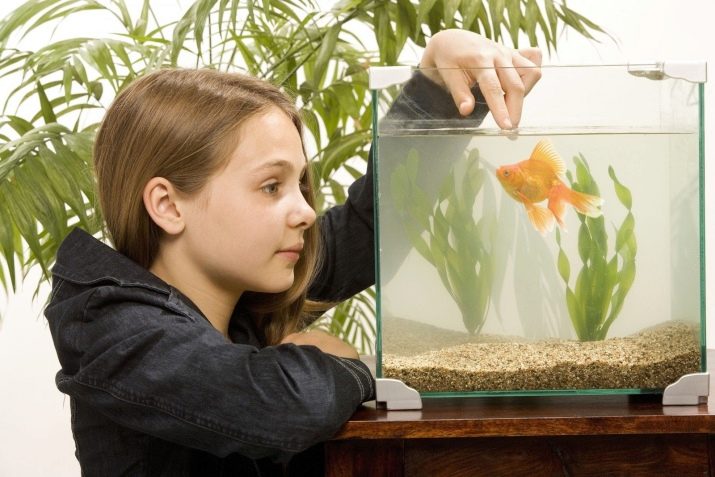
About what types of children's aquariums exist, see the next video.










